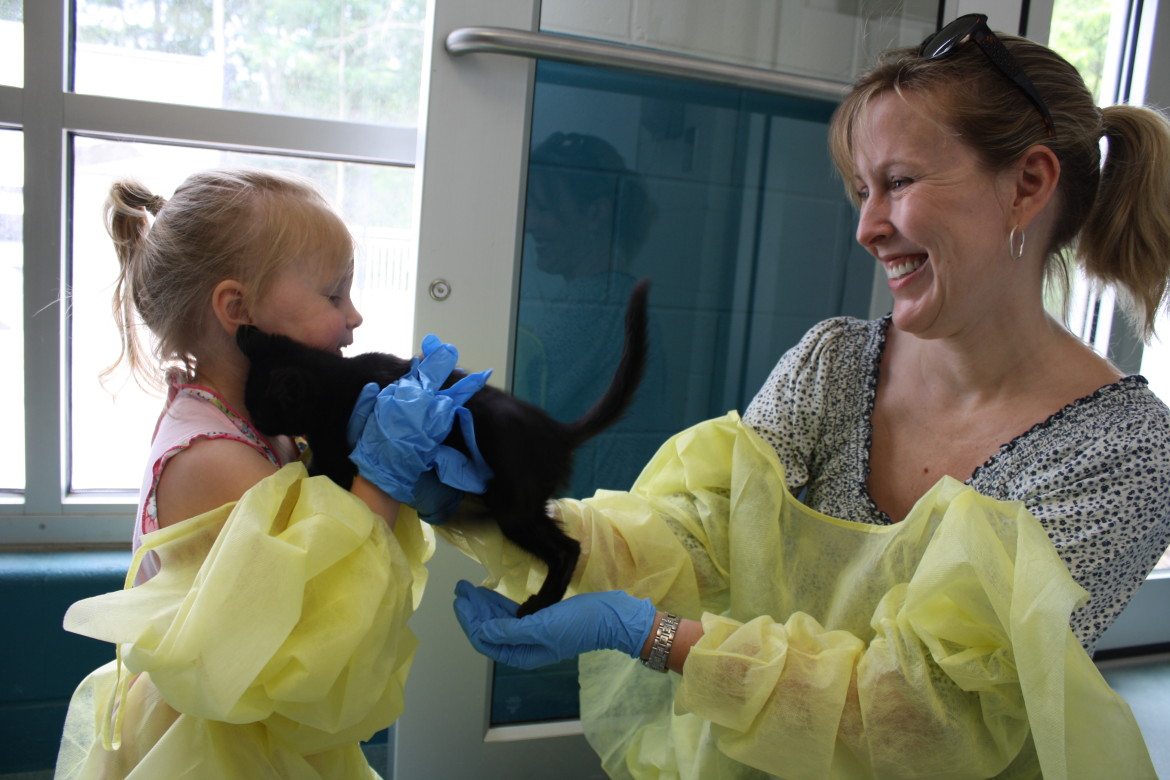Wake County Animal Center is stepping up efforts to decrease the number of animals that are euthanized each year.
From January 2008 to June 2011 about 8,200 dogs and 15,600 cats were euthanized. Statewide, Wake County has the lowest euthanasia rate at 49 percent in 2010. But it also has the highest adoption rate at 39 percent.
Interim center director Angeline McInerny said that the primary reason for euthanization is behavior and medical issues. Feral cats and aggressive dogs are unadoptable under state law. Ultimately space also plays an issue — even a small part — especially in the spring and summer months when more cats and dogs are brought into the shelter.
“The goal is to lower the euthanasia number as low as we can go,” McInerny said.
Wake County is striving to be like Washoe County, Nev., San Francisco, Austin and Philadelphia, which have significantly lower euthanasia rates at 7, 19, 26 and 36 percent, respectively.
While the SPCA can stop admitting animals when their facility becomes full, the county animal shelter has open admission. The result is the need to adopt them out as quickly as possible or put them to sleep.
“It’s very difficult for an open admission facility to be a no-kill shelter,” McInerny said.
To increase adoptions, the animal center is looking at different ways to attract pet owners.
“People are out looking for pets,” said Matt Roylance, assistant director of environmental services for Wake County. “We want them to think about us. We want our facility to be a destination for people.”
The result is an aggressive marketing campaign that includes on-site adoption events, outreach events and an active social media presence.
After some successful experiments with reduced rates in December 2009, the center was able to reduce its adoption fees to a tiered system in which new pet owners pay less for animals that have already been spayed or neutered. McInerny said it has helped increase the numbers of people adopting.
To ease the stress of space, the center began a foster care program in 2008. The program places pets with volunteers who keep the animals in their homes until they are ready for adoption. Sometimes they provide basic medical care and others just provide a sociable setting for the animal to thrive. Since its inception, the number of animals placed in foster homes has grown exponentially. Another major piece of the puzzle is encouraging more people to reclaim their lost pets. The state requires a 72-hour hold before any animal can be placed up for adoption. Animals found in Raleigh, Cary or Garner are on a five-day hold.
Animals that can be adopted out are put in the general population for potential adopters during that hold period. Families can put a deposit on an animal, but it cannot be taken home until the hold has expired.
McInerny encourages people who have lost a pet, especially an outdoor cat, to come directly to the shelter. When an owner reclaims their pet, it allows another pet to be adopted.
“Reclaims actually saves two lives,” she said.
Some owners opt to leave their pets at the shelter instead of paying the reclaim fees and fines, which could add up to a few hundred dollars. The center is piloting a new program that would waive the first reclaim fee if the animal was spayed or neutered, microchipped and vaccinated.
McInerny couldn’t provide any information on how the recession has played a role in the number of owners who don’t pick up their lost pets or the number of owners surrendering a pet. While the owners provide reasons for surrendering their cat or dog, McInerny doesn’t believe the information is always accurate.
“[Finances are] a hard thing to explain to a stranger,” she said.
Another key element to reaching their reduced euthanasia goal is reducing the number of feral cats brought into the shelter. More than 7,000 feral cats were euthanized between January 2008 and June 2011. McInerny said controlling the feral cat populations through trap-neuter-release programs would also decrease the amount of cats coming to the shelter.
Neutering feral cats will also decrease the number of litters that come into the shelter each spring.
“Every litter that is born impacts the chances of an adult cat getting adopted,” McInerny said.
McInerny said the shelter also houses a lot of bully mixes, like pit bull mixes, and lab mixes that often spend the most time on the adoption floor.
“People are looking for a specific breed than they are for a mix,” she said.
She explained that many people are also afraid of dogs that have aggressive reputations and opt for smaller breeds.
